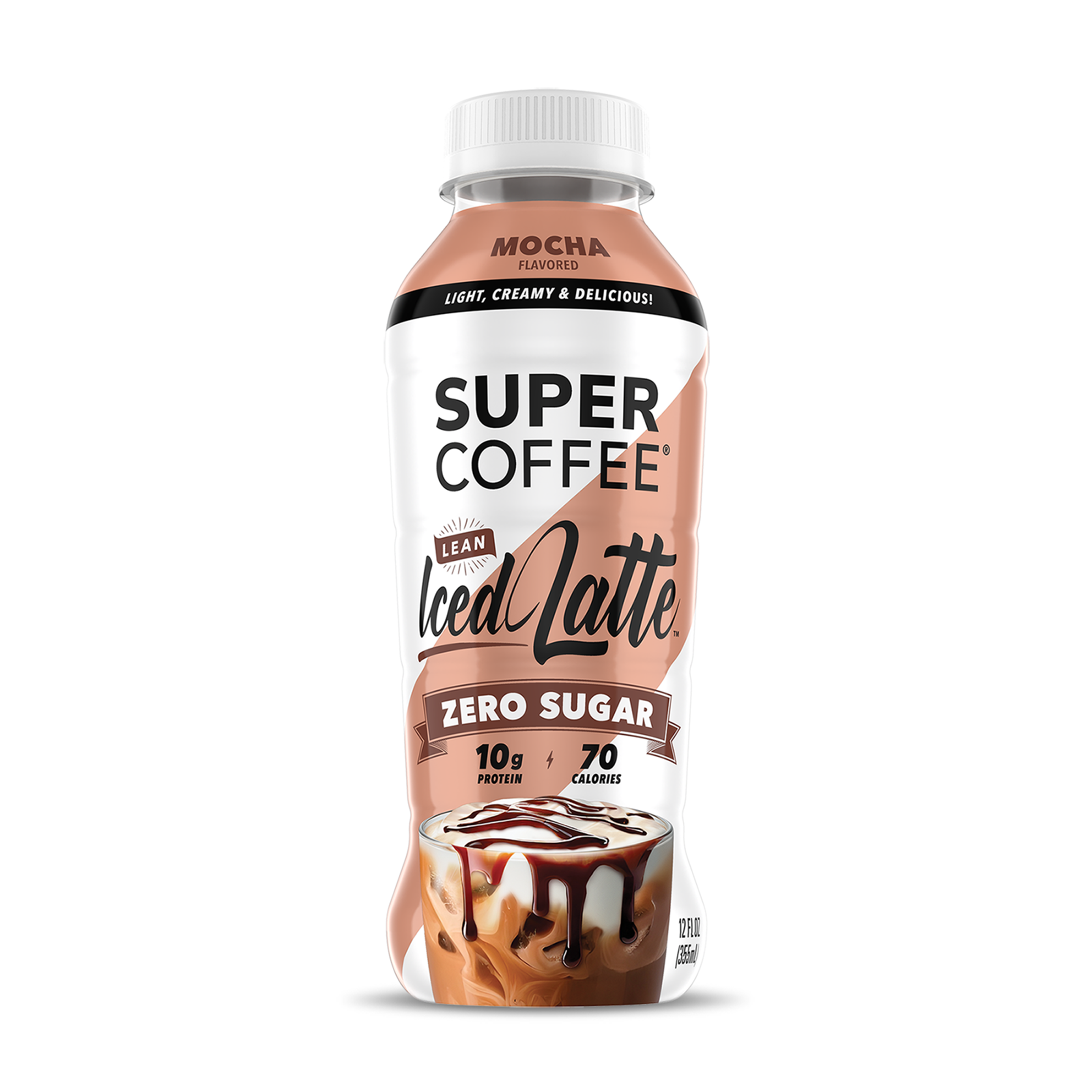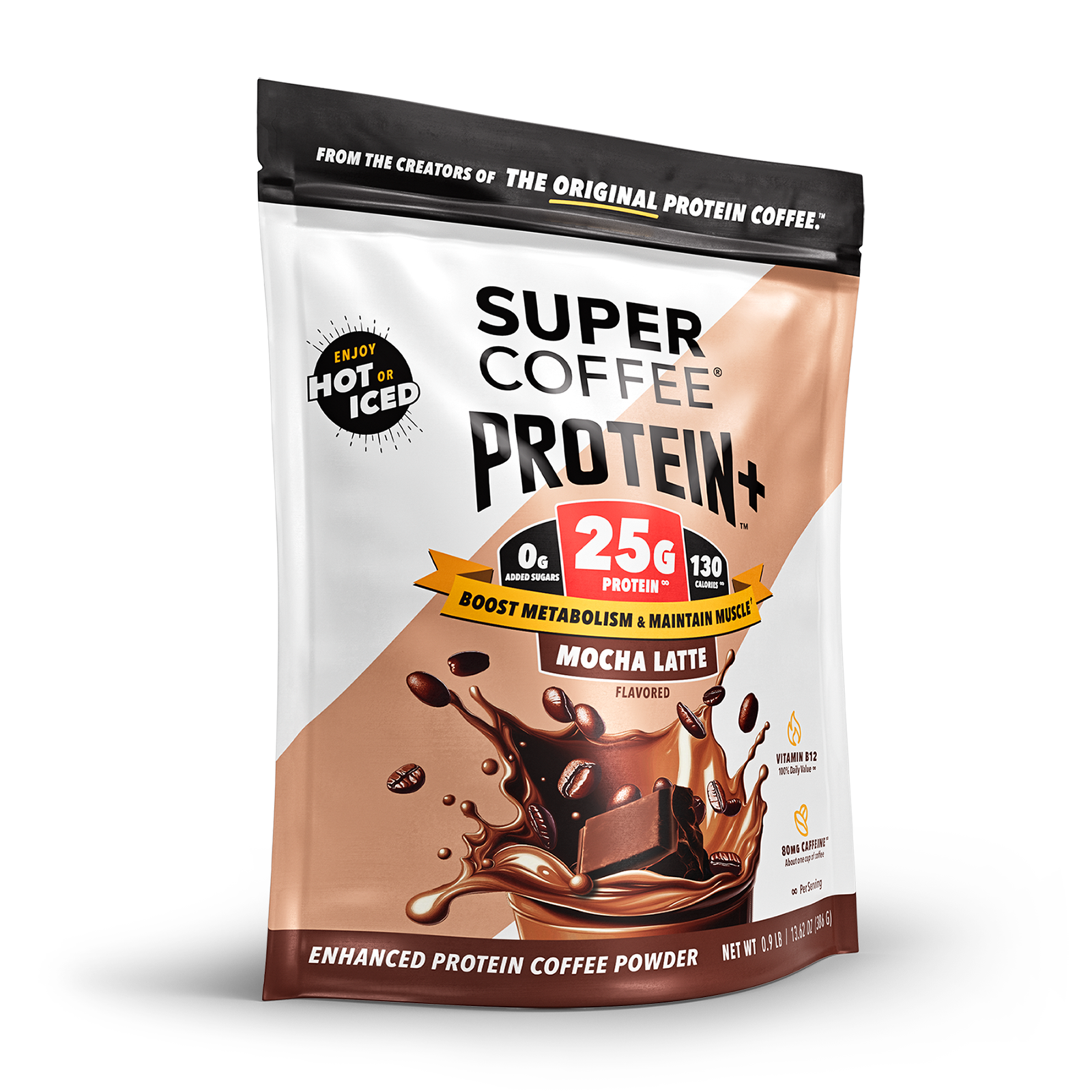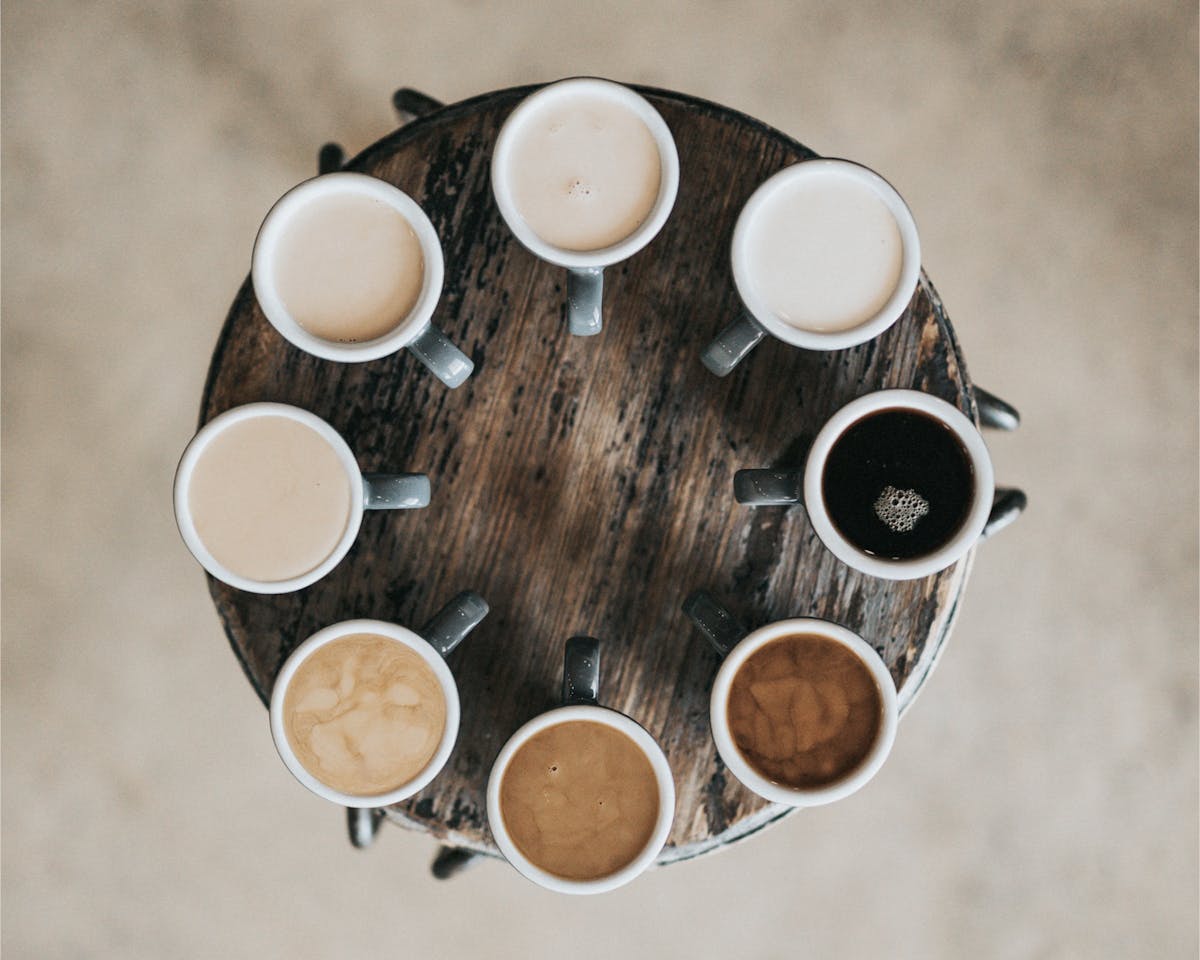Your cart is empty
When your parents or grandparents were growing up there were only a few types of coffee.
At home, there was instant coffee and brewed coffee. In a restaurant, there was hot coffee and iced coffee. (Or maybe they preferred decaf.) Italian or “cultured” coffee drinkers might have known about espresso and cappuccino, and you could order Irish coffee in a bar.
Today? Even most teenagers probably know the difference between an Americano and a Macchiato, although they might prefer a Strawberries and Cream Frappuccino or a Vanilla Chai.
But if you’re still a little baffled when the barista asks for your order – or you’re simply searching for a new, yummy type of coffee to try – we’ve got you covered.
Here’s your connoisseur’s guide to coffee.
Types of Coffee Beans
Let’s take care of some preliminary business before discussing all of the delicious drinks you can make with coffee.
The flavor and aroma of any coffee will largely depend on the type of beans used to make it. So we’ll begin by looking at the varieties of coffee beans most commonly used to make everyone’s favorite beverage.
Arabica Beans
Once upon a time, people who cared about their beans were often dismissed as “coffee nerds.” However, that was before premium coffee companies started bragging about using 100% Arabica beans.
That advertising helped coffee drinkers understand the clear truth: beans make a big difference, and Arabica beans produce better coffee.
Today, Arabica is the world’s most popular coffee bean, accounting for well over half of all beans sold. That’s for a good reason: they’re the highest-quality coffee beans you can easily buy.
Arabica is rich, smooth and complex, with more acidity than other beans. Perhaps most importantly, it’s not bitter, mostly due to its higher sugar content.
These beans come from the Coffea Arabica plant, which originated either in Yemen or Ethiopia. Arabica is now grown around the world, including in Latin America, but it’s a small and relatively-fragile plant that takes years to mature. It only flourishes at high elevations in cool, subtropical climates, where the soil is rich and moist and ample shade is available.
All of those cultivation requirements make Arabica plants more difficult to grow than other varieties.
Understandably, that means Arabica beans are substantially more expensive than the other types of beans commonly available, Robusta. Many coffee companies blend the two together to reduce their production costs.
One of the terrific properties of Arabica coffee is that it can contain many different flavor notes, depending on where and how the beans were grown.
Robusta Beans
When you buy an inexpensive bag of beans or cup of coffee, chances are good that you’ll be drinking Robusta. It’s the second-most popular coffee variety, mostly because of the beans’ dramatically-lower price and bountiful supply.
Robusta might be the right choice if you need to stay awake since it has a much higher caffeine content than Arabica. However, it’s harsher and more bitter because it contains half the sugar of Arabica, along with a high pyrazine content.
Many find Robusta difficult to drink on its own, but a small amount of Robusta beans is often added to Arabica beans to give espresso a more powerful finish and better crema. Robusta is also commonly used to make instant coffee.
Robusta beans are harvested from the Coffea canephora plant, native to Africa but grown around the world. It’s a much hardier plant than Arabica; it requires much less care, it’s able to thrive at lower altitudes and in less forgiving climates, it’s resistant to most pests, and it produces crops every year.
Bottom line: an acre of Robusta plants can produce far more coffee beans than an acre of Arabica plants, at a much lower cost.
Other Types of Beans
You’re not likely to find anything other than Arabica or Robusta beans at your local store, and it’s rare for high-end coffee vendors to use other types of beans.
But they do exist.
- Liberica beans (Coffea liberica) produce a strong, nutty and slightly fruity coffee, which is extremely difficult to find – unless you’re in the Philippines, where it’s sold as Barako coffee and is quite popular. In other nations, it’s usually found only in markets or cafés that cater to the Filipino community.
- Excelsa beans are similar in many ways to Liberica beans; in fact, they’ve just recently been classified as a variant of Liberica. Coffee made from these beans is tart, dark and complex, with less caffeine. The beans are also extremely difficult to find since they’re primarily grown and consumed in Asia.
Brewing Coffee Beans
Ready for a terrific cup of coffee or an exotic coffee drink?
We figured you were – but we’re not quite there yet. It’s also important to look at the different ways to brew coffee because the brew has a major impact on coffee’s strength and flavor. Let’s check them out before we start playing barista.
Drip Coffee
Traditional brewed coffee is prepared in – not surprisingly – a drip coffee maker. Boiling water is dripped over ground coffee beans, the water passes through the beans and a filter and drips into a pot, ready to drink.
Drip coffee is easy to prepare, and when made with the same type of beans in the same machine, should always taste the same.
Pour-Over Coffee
This is essentially the “manual version” of drip coffee making (although you can now buy pour-over machines). Hot water is still poured over ground beans, but the ideal water temperature, brewing time, and amount of coffee grounds can be chosen individually for every cup.
Pour-over takes more time and care, but can produce better coffee than the drip method. A French press (actually invented in Italy) does much the same thing, but with different mechanics.
Cold Brew Coffee
If you’ve ever made iced tea on your porch, you know how to make cold brew. Room temperature or cold water is poured into ground coffee and left to steep for 12-24 hours. However, it will wind up extremely strong, more like an extract than actual coffee, so it’s usually diluted with cold water before it’s ready to drink.
Cold brew coffee can be brewed manually or with a cold brew machine. Be aware, though, that it’s not the same thing as iced coffee which is just regular coffee served over ice. Cold brew is smoother and less bitter.
Espresso
Made in a dedicated espresso machine, this classic is the product of pressurized hot water forced through a filter containing finely-ground beans. It’s thicker and stronger (and contains more caffeine) than regular coffee, it ends up topped with a foam crema, and is usually measured in one-ounce shots.
Espresso is the base for a large number of coffee drinks. It’s similar to darker and more concentrated ristretto, which is brewed in the same way but with half the water.
Many of the types of coffee you can order at a high-end coffee outlet are made using these brews and techniques – but it’s fun to make them on your own, too.
Ready for a cup? So are we.
Types of Coffee Drinks
We’re not bothering to list the standard choices that all coffee drinkers know, like brewed coffee, iced coffee, and instant coffee. We’ve already mentioned them and they really don’t need elaboration.
Instead, we’ll be focusing on the coffee drinks available at almost all upscale coffee shops and coffeehouses. Your parents or grandparents may not have been familiar with them, but anyone who loves coffee should learn about them and try them. Anyone who doesn’t is missing out.
Espresso Drinks
- Espresso: The granddaddy of them all, or as they’d say in Italy, nonno di tutti nonni. Served in a small cup (usually as a single shot), this thick black coffee with creamy foam on top (the crema) is very strong, very caffeinated, and often used as a base for other coffee drinks. A double espresso is known as a doppio, and it’s simply a double shot of the legendary Italian coffee.
- Ristretto: Ristretto means “short” in Italian, and this drink is essentially a more concentrated espresso made with half the usual amount of water. On the other hand, a Lungo (meaning “long”) is an espresso with twice as much water.
- Red Eye: Take a cup of brewed coffee and add a shot of espresso, and you have a Red Eye – a morning cup of joe that packs an extra caffeine punch. That’s still not enough? A Black Eye is coffee with two added espresso shots.
- Americano: The legend behind the Americano is that it’s based on U.S. soldiers diluting their coffee with water during World War II in order to deal with shortages in the field. Today, a caffè Americano is an espresso shot combined with a few ounces of hot water.
- Long Black: Think of it as an Americano from Down Under. In Australia and New Zealand, they use half the water and twice the espresso to make this powerful coffee drink.
Coffee Drinks Made with Milk
- Cappuccino: Morning isn’t morning in Italy without a cappuccino – or several of them. One-third espresso, one-third steamed milk, one-third milk foam; it’s three-thirds delicious. Many like to sprinkle cocoa powder on top.
- Latte: Americans love lattes, which could be thought of as cappuccino on training wheels. The basic version is made with espresso, steamed milk, and just a little bit of foam. Lattes with added shots of flavored syrup are also extremely popular. A Caffe Breve is similar, with less espresso, more milk, and more foam.
- Cortado: This is one of the many variations on cappuccino. The cortado is one shot of espresso and an equal amount of steamed milk, without the foam on top. Pour warm milk over a ristretto shot instead of espresso, and you have a Piccolo Latte.
- Flat White: Here’s an Australian/Kiwi twist on cappuccino, with the same amount of espresso, but double the amount of warm milk – and hold the chocolate powder.
- Macchiato: A macchiato also contains espresso and steamed milk, but only a couple of teaspoons of the latter and a full shot of the former. Some people order their macchiato “topped up” with extra streamed milk, others like a flavor shot in it. What’s a long macchiato? Basically a double macchiato, but a little heavier on the espresso than the milk.
- Café au Lait: Back in the day, this was considered exotic by coffee drinkers. It’s simply hot coffee with a splash of milk.
- Mocha: Few things go together better than coffee and chocolate; that’s why mocha is a very popular flavor for desserts. If you order a Mocha in a coffee shop, you’ll get a fabulous layered treat with a shot of espresso on the bottom, topped with chocolate syrup (or powder), steamed milk, and whipped cream on top. Take out the chocolate and steamed milk and you’ll have what’s known as a Vienna. Or you can double the espresso and end up with a Mochaccino.
- Affogato: Dessert for breakfast – or lunch – or dinner – or dessert! The affogato is a shot or two of espresso with a scoop of vanilla ice cream. It’s difficult to imagine a more decadent, or delicious, drink.
Specialty Coffees
Confused yet? Just imagine what a brand-new barista goes through keeping all of these drinks straight.
- Frappuccino: You’ll only get this one at Starbucks because the name’s been trademarked. But it’s blended coffee, milk, caramel syrup, and ice (served cold, of course) with caramel and whipped cream on top. They offer non-coffee flavors, too.
- Nitro: There’s no way to know how long the Nitro will be popular, but this cold drink is hot right now. It’s cold brew coffee that’s been infused with nitrogen gas, giving it a velvety texture (that some compare to Guinness) with a frothy layer on top.
- Mazagran: This cold, sweet drink that’s a variation on iced coffee originated in Algeria but is now quite popular in Portugal and Spain. Espresso or strong coffee is poured over ice, often with rum or a liqueur added before serving.
- Turkish Coffee: Now this is coffee. Made properly, Turkish coffee is made from very finely ground coffee beans, simmered with water and sugar (or sweetener) in a special pot, and served unfiltered in a small cup with lots of foam on top. You may have to visit a Turkish or Middle Eastern restaurant to sample this delicacy but as long as you can handle strong, it’s definitely worth the trip.
- Irish Coffee: We’ll finish up with one of the different types of coffee that your grandparents – and those who came before them – were probably familiar with. This classic contains hot coffee, Irish whiskey and sugar; a designated driver is optional, but probably a good idea.
They sound so good you’re ready to try them all? Well, it might get expensive if you start ordering them all at Starbucks or your local coffee emporium. A good start would be picking up an espresso machine on Amazon, and going from there. You may find out you’ve had a barista hidden inside of you all along.
Blog posts
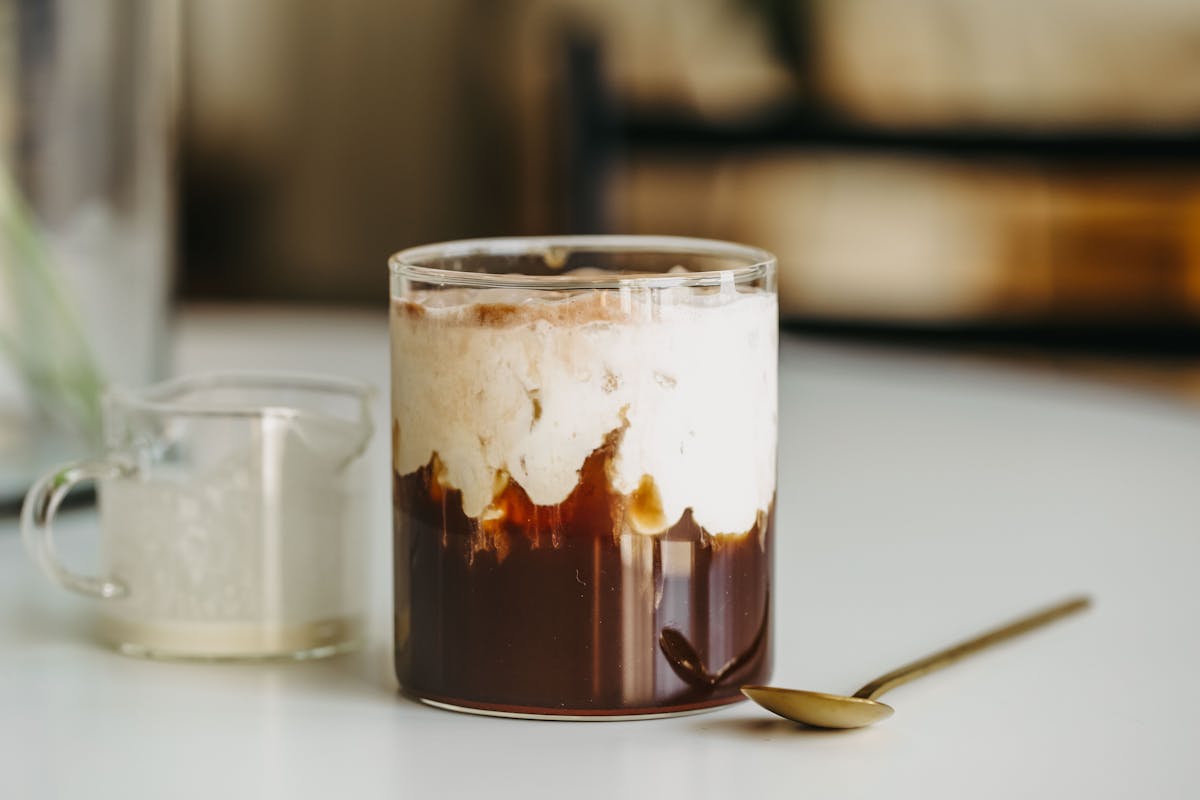
Cold, creamy and delicious - This chocolatey cold brew recipe is the perfect treat to kickstart your morning! The Recipe Chocolate Cream Cold Brew Prep Time: 1 minutes Cook Time: 5 minutes Ingre...
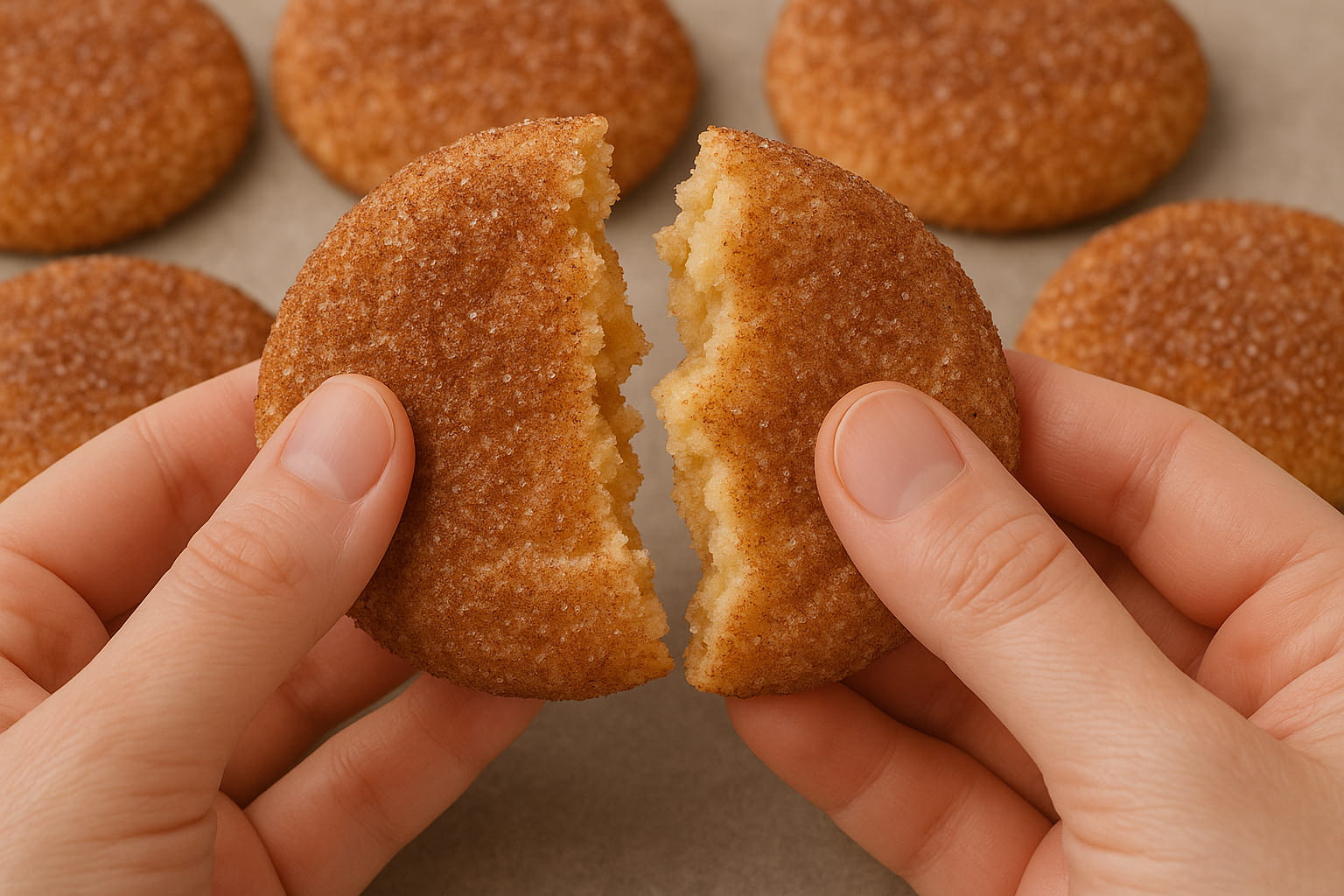
Indulge in the warm embrace of autumn with Pumpkin Spice Snickerdoodles - soft, spiced, and utterly irresistible! The Recipe Pumpkin Spice Snickerdoodles Prep Time: 10 minutes Cook Time: 1 hour ...
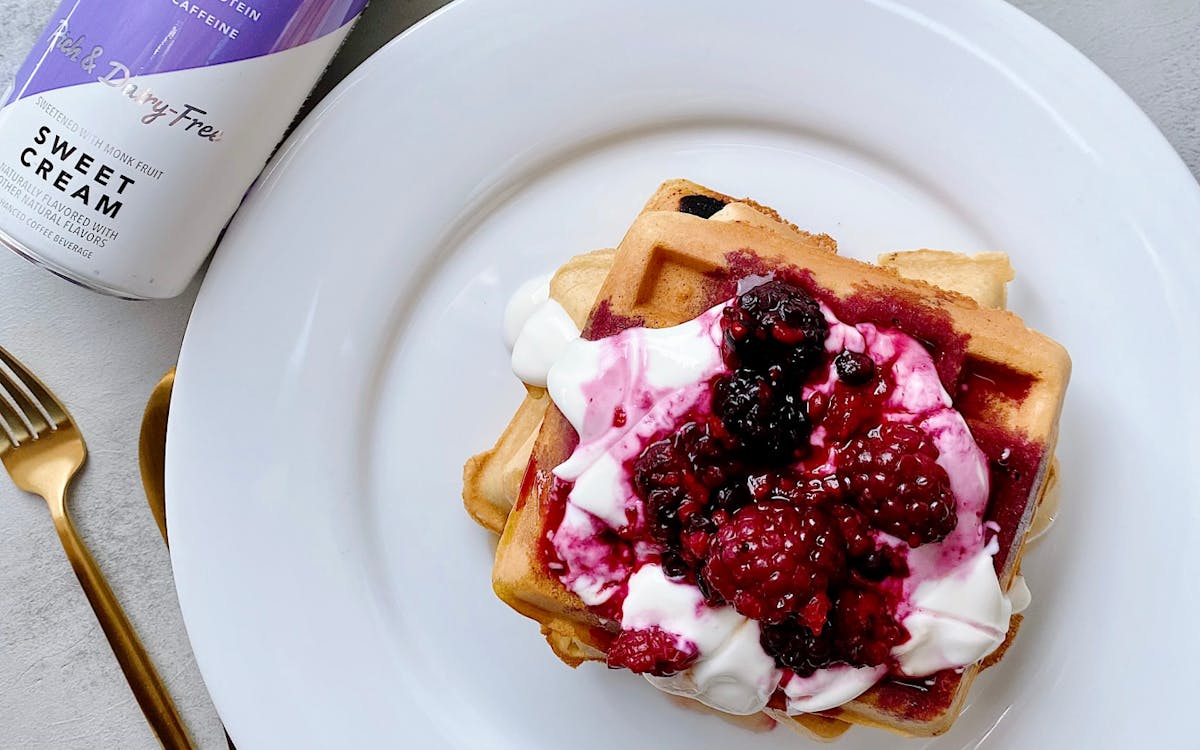
Low Carb Berries & Cream Waffles
These low carb/low sugar waffles are delicious, wonderfully crispy on the outside, and fluffy on the inside. You can also double batch and freeze for easy weekday breakfasts. Featuring our almost-...
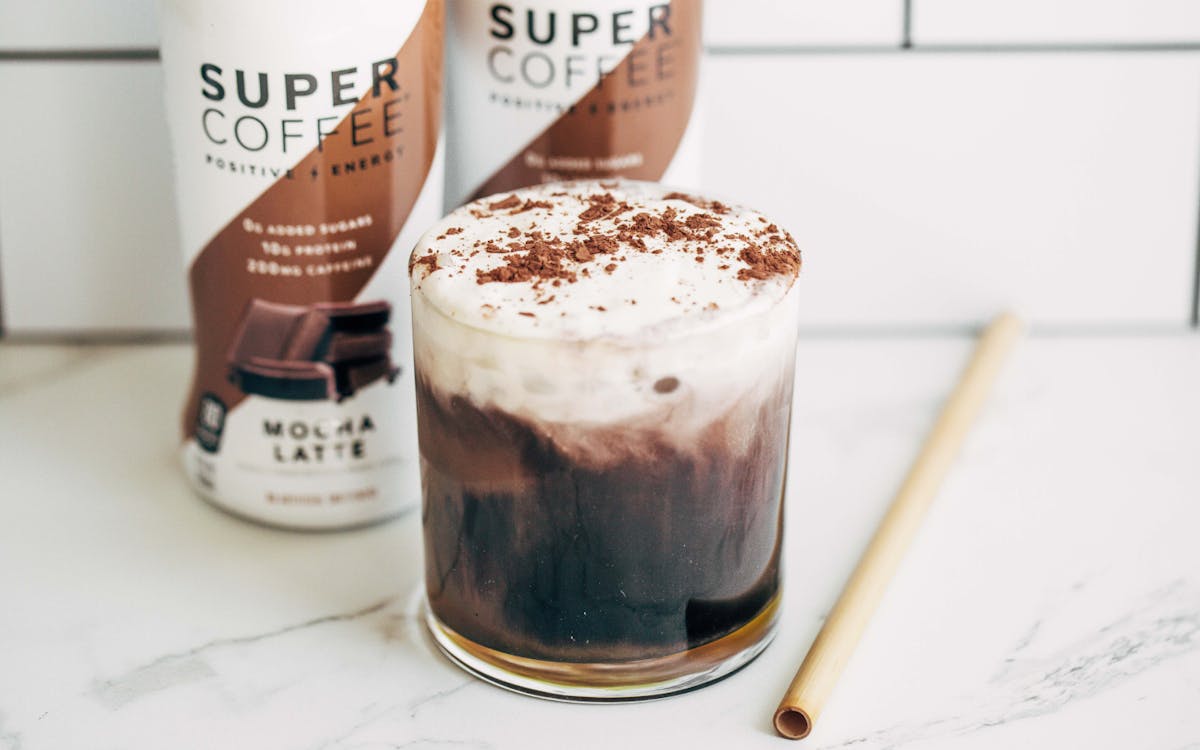
This may be the most fun latte recipe we’ve tried yet! With gooey & decadent black chocolate drizzle and a thick layer of creamy French Vanilla, just one sip of this iced latte will transport ...
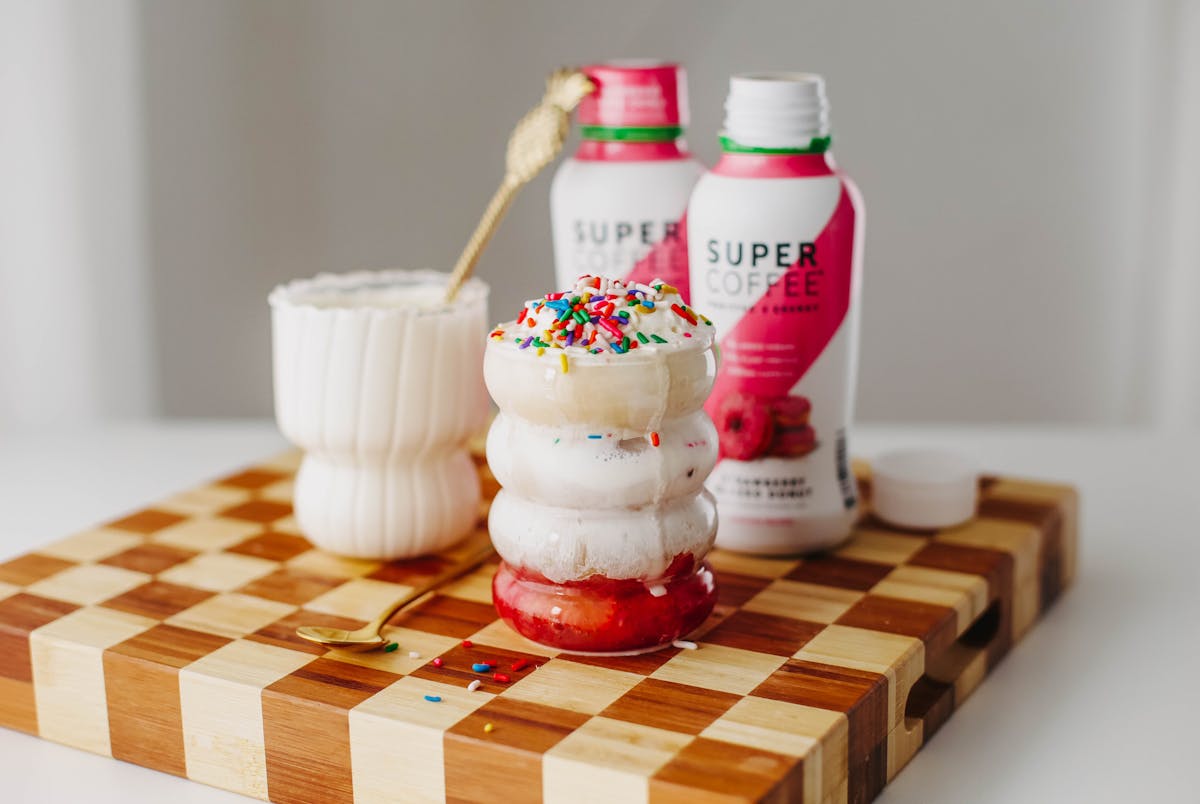
Strawberry Sprinkle Keto Coffee Recipe
Nutritional Info Calories: 274 Fat: 26.7g Carbs: 5.7g Protein: 4.5g Sugar: 2.1g Ingredients 3 strawberries, sliced. 3-4 tbsp heavy cream or half & half. Enough ice to fill a glass. 1/2 cup S...
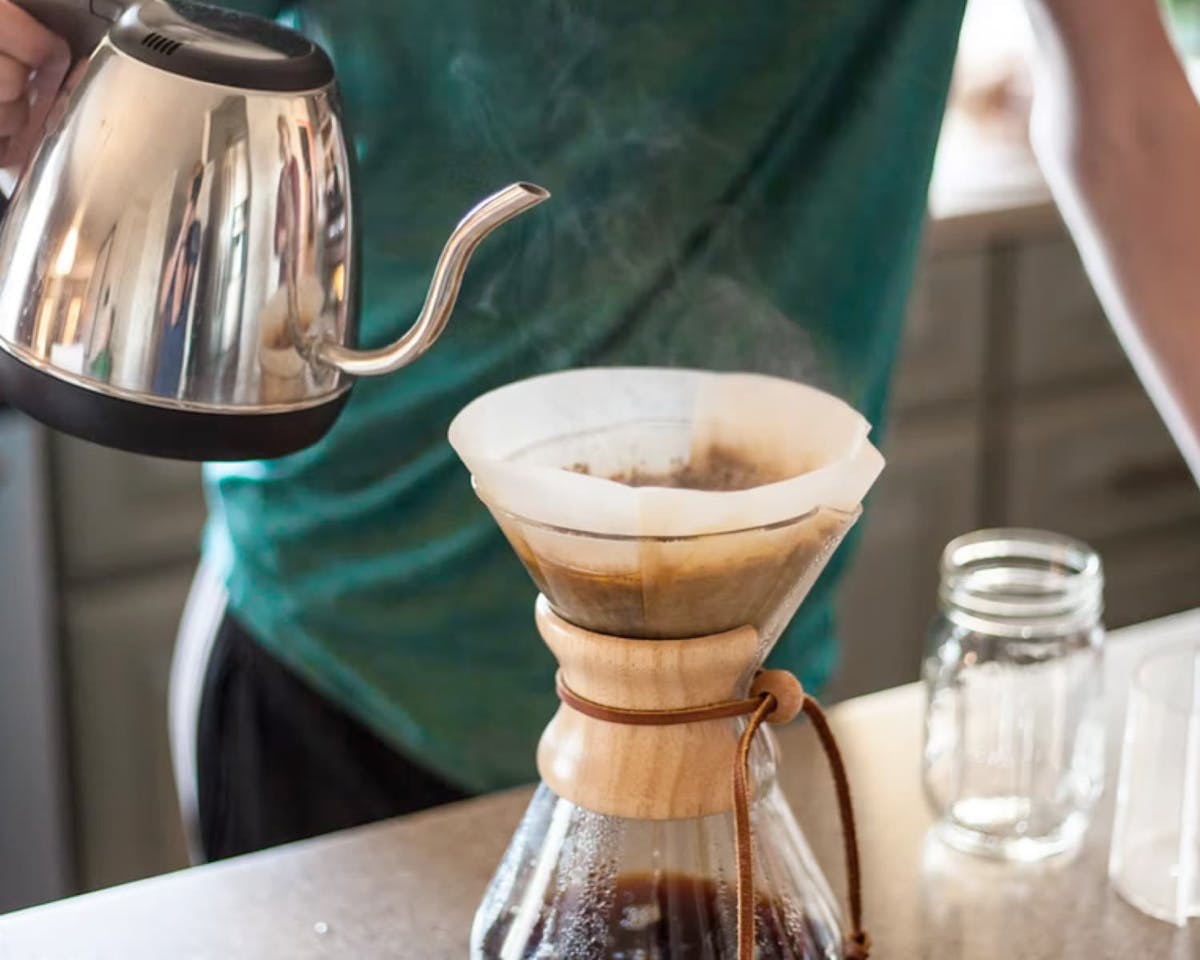
8 Healthy Coffee Recipes That Are Better Than Starbucks
There’s no question about it. Coffee is good for you. Those who don’t like black coffee, of course, commonly add milk, cream and sugar – even if that also means adding calories, fat or carbs to the...



